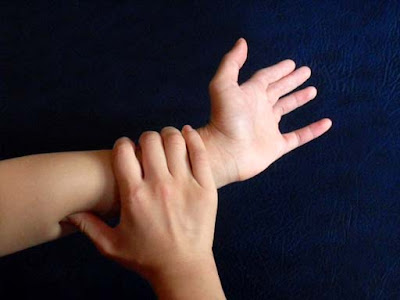Soft Tissue Release (STR) is a form of manual therapy used to treat soft tissue, in this case muscle, fascia and tendon. Quite often tightness in soft tissue is not uniform and there will be specific areas of myofascia that are restricted or that may contain scar tissue and adhesions.
Traditional stretching methods normally involve movng the muscle insertion (where one end of the muscle attaches to bone) away from the muscle origin (where the other end of the muscle attaches to another bone). This will usually result in the less-restricted portions of the muscle stretching first with little effect on the restricted portion. By determining which parts of the muscle are tightest and 'locking' it with various tools (digits, forearms, elbows, massage tools) to create a false muscle origin before moving the insertion away from that false origin, it is possible to isolate the stretch to the portion of the muscle that needs it most.
To perform STR on the flexors of the wrist and fingers:
- Determine which portions of the muscle are restricted. Such areas will normally seem tight during movement and will feel hard or 'grisly' to the touch.
- Apply a 'lock' to the muscle just above the area of tightness. The lock should be applied obliquely at a 45° angle and all excess tissue should be moved away from the wrist. The effect of applying this pressure is to create a false muscle origin. (You may notice that I have applied the lock with my thumb, this is fine for me as I am accustomed to applying pressure through my thumbs. If your thumbs are weak or hyperextend please use a massage tool to avoid injury.)

- Whilst maintaing the pressure of the lock, extend the wrist (bend it backwards) to apply the stretch. By locking the tissue to create a false muscle origin all the tissue below the lock will be stretched and the tissue above the lock will be uneffected. By performing STR it is possible to isolate the stretch to the tightest parts of the flexors. It is also possible to avoid aggravating the muscle tendons which are currently inflammed.

- Repeat the process several times until the muscle feels 'stretched'
Please note that I have only demonstrated how to apply STR to the flexors because I have pain at the medial epicondyle. If your problem is elsewhere you can still use the same principles but you will need to adapt the technique accordingly.

No comments:
Post a Comment